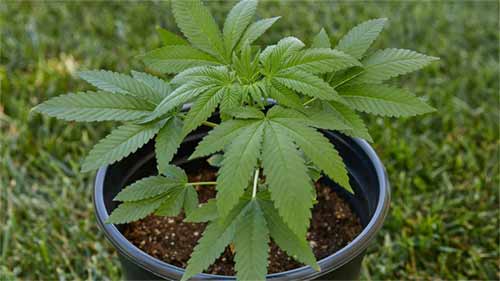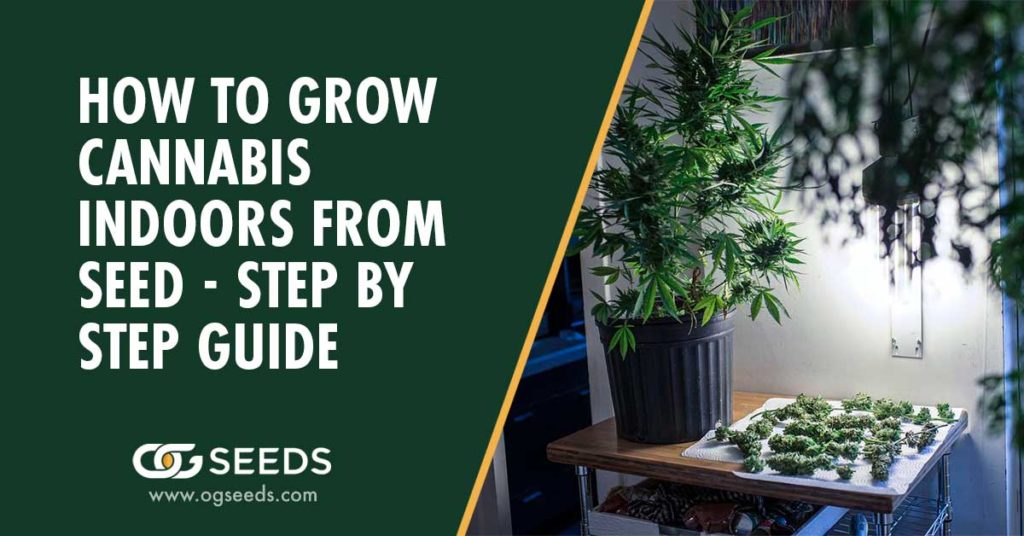
How to Grow Cannabis Indoors from Seed – Step by Step Guide
How to grow Cannabis indoors on your own requires time, money, and attention to detail, but the benefits are more than worth it. It is therapeutic to garden and helps foster a connection with plants that you can’t experience otherwise.
The great thing about growing Cannabis indoors is that you can do it any time of the year and control what goes into the plant. Do you live in an apartment or a small house? It doesn’t matter if you don’t have a backyard or a lot of space, Cannabis can grow nearly anywhere.
Table of Contents
Why Growing Indoors Is Better
Growing Cannabis indoors gives you a certain connection to your plants that you feel as their caregiver. It’s okay if you make mistakes, those are learning experiences. Growing indoors is more adaptable than growing outdoors due to the ability to control all the elements of your plant’s health. Learn how to grow your own cannabis today! Like every other living thing, the Cannabis plant needs its rest. You’ll be able to ensure it gets the perfect amount of rest by using light timers.
High-quality Cannabis
While it can be more resource-intensive than growing outdoors, and you will need to pay more for utilities to power equipment, you will be able to control every aspect of your grow environment and what you feed your plants, which allows you to grow top shelf Cannabis that you love.
Adaptability
You don’t have to depend on the sun and the seasons like you do with outdoor growing. As the grower, you will be providing the plants with everything they need to grow, including the grow medium—soil, rockwool, etc.—and regulating their water and nutrient requirements, as well as their temperature and humidity.
Multiple harvests
It is completely up to you when your plants grow, when they flower, and when you harvest, and if you want, you can start another batch immediately or at any time. Whether winter or summer, you can grow at any time of year and get consistent amounts.
Privacy and security
If your crop is legal, you may still want to hide it from judgmental neighbors and certainly from thieves. The advantage of growing indoors is that you can conceal your grow behind a locked door.
Those female cannabis plants produce buds. Don’t transplant or it can damage your plant roots. That growth stage though. Figure out the light cycle so you know how many hours of light to give your plants. You need that vegetative growth from your plants. Once your germinate your cannabis seeds your good to go.
How to Grow Cannabis Indoors
If you’re thinking about starting a cannabis cultivation journey, growing indoors is the best place to start. While outdoor growing has various benefits, indoor growing allows for more control, meaning they produce better quality buds.
Once you create your first joint with potent buds that you created, all your efforts will finally feel like it was worth it. Above all, remember that this is a fun hobby and shouldn’t be pushed too much. Growing great Cannabis at home is a process of trial and error.
You only need a few plants to rely on if you are not a professional grower.
Why Grow Cannabis Plants Indoors?
Indoor growing has several advantages. For starters, you can protect your Cannabis plants from potential thieves. You can control the temperature and humidity more effectively, allowing you to grow continuously. Having multiple harvests every year will be possible. Indoor cannabis plants can be more robust and produce danker buds. Anyone growing Cannabis indoors can benefit from reading this guide and our other articles on growing techniques, such as Scrog and SOG.
Creating Your Grow Room
You want to create an ideal environment for your plants throughout the growing process. Light, temperature, humidity, carbon dioxide content, and air movement within each indoor growing space are precisely controlled to achieve this.
Ultimately, equipment costs and recurring utility bills are more expensive than outdoor and greenhouse settings. The cost of growing Cannabis outdoors is lower. You don’t have to provide most of the supplies when you grow outdoors since mother nature will take care of that for you.
Unfortunately, you are more likely to have your plants stolen, pollinated, infested by bugs, eaten by deer, etc. Privacy also is not guaranteed — judgemental neighbors are a potential issue.
You will produce a larger amount if your plants make it to harvest; However, the buds will not be as potent as ones from a properly managed indoor grow.
Growing Cannabis Indoors Benefits
Outdoors can provide higher amounts, but plants are exposed to the environment and risk being discovered by nosey people. Indoor growers have more control over all factors important to growing, resulting in denser, better-tasting buds with higher potency and more cannabinoids. Indoor grows are less likely to have problems with mold, pests, etc.
- Top Quality Cannabis
- Privacy & Protection
- Adaptability
- Multiple Harvests Per Year
- More Control Over Environment
How To Grow Cannabis Indoors
To grow indoors, you must do it in a separate room, sealed off from the outer environment. Doing so helps you control the environment and keep out potential pests and mold.
Setting Up An Indoor Grow Room
To properly set up your grow room, pick the right grow light(s) for your needs. Growing Cannabis indoors requires that at least one room be closed off from the outer environment.
It is possible to use the same room for vegetative and flowering stages and dry your Cannabis. Professional or experienced growers have a separate room for all 3 of those steps. All are usually built the same as follows. Make sure your room or rooms have enough space to do whatever process(s) are needed.
Have Your Grow Room Ready
Step 1 – Seal Out The Light – Do whatever you need to do to make this happen
Step 2 – Install Cannabis Grow Lights
Several different types of grow lights are available for your grow space. Light timers are a crucial element to the grow, as your plants can die if they receive too much or too little light.
The best types of grow lights are typically high power LED lights since they produce the least amount of heat, but they are expensive. Different bulbs need to be placed at different lengths away from the plants so be sure you they are placed at the correct distance.
Make sure you have enough power to supply your light setup, and also make sure everything is wired correctly and professionally, since it requires working with electricity. Here are the most common types of lights, theirs pros and cons, and some tips to use them to your advantage fully.
Cannabis Grow Lights
- Metal Halide (MH) (HID) If high amounts are your goal, use a high-intensity discharge (HID) bulb — metal-halide (MH) for the vegetative phase of growth, and use High-Pressure Sodium (HPS) during the flowering stage. These bulbs emit a lot of light and heat, so you need to position them farther from the plants.
- LED (light emitting diode) grow lights have a significant downside, namely their cost: well-designed fixtures can cost 10 times as much as comparable HID fixtures. LEDs have many benefits, including lasting much longer, using far less electricity, creating significantly less heat, and producing a wider spectrum of light, leading to higher amounts and better quality.
- Fluorescent Lights – Small-scale cannabis growers often use fluorescent light fixtures, particularly those with high-output T5 bulbs, for a couple reasons –
- Since reflectors, ballasts, and bulbs are all included, they tend to be cheaper to set up.
- Since they generate less heat than HID setups, they don’t require a cooling system.
There are several disadvantages to fluorescent lights, including that they are less efficient, generating about 20-30% less light per watt of electricity. Space is also an issue, since it would take approximately 19 four-foot long T5 bulbs to equal the output of a single 600 watt HPS light bulb.
Control Temperature
An AC unit may also be necessary to regulate the temperature along with fans. The ability to control these factors and understand how to properly use your equipment is vital to growing. Different lights throw off different amounts of heat with LEDs producing the least amount of light
How To Monitor & Correct Temperature
By using A/C units, fans, and various thermometers, cannabis cultivators are able to fully control the temperature within the growing environment. Being able to do so and maintain the correct temperatures at the necessary times is essential.
Control Humidity
A dehumidifier or AC unit may also be necessary to help regulate humidity or temperature in addition to fans. Being able to regulate these factors is vital to growing.
How To Monitor & Correct Humidity
A dehumidifier, Fans, and an AC unit may be necessary to help regulate the humidity and the temperature. Being able to regulate these factors is vital to growing high quality cannabis.
It is not necessary to use extra tools to adjust the humidity in small spaces, such as a four-square-foot grow tent – but you can use DampRid bags to decrease humidity or a small humidifier to increase it.
Provide Air Circulation
Fresh air within your grow space is necessary for growing the best Cannabis possible. Your growing space needs outdoor air to circulate through the room. Fresh air is brought into the area by your intake fan. Place it on the opposite side of the room.
It is important to keep your grow room ventilated so your plants can receive fresh air and carbon dioxide (CO2). Circulation of air is crucial. This is where extractor fans and intake fans come into play. The primary purpose of an extractor fan is to remove warm air from the room.
Fresh air is brought into the area by your intake fan. Place it on the opposite side of the room. You will need more or fewer fans depending on the size of your grow space.
You will need more or fewer fans depending on the size of your grow space. You’ll need to ensure you have the right filters to prevent pests from getting into your growing space. Oscillating fans work best for indoor growing.
Caring For Your Indoor Cannabis Plants
You must know how to set up an indoor grow room to properly care for your plants. Indoor growers especially will benefit from this. You will always have better results if you grow your plants directly from cannabis seeds rather than cloning.
Growing Cannabis indoors has many benefits compared to outdoor growing since you can fine-tune all the different growing aspects, producing an ideal environment for your plant to thrive.
Even if you’re legally allowed to grow, growing indoors keeps it safe from prying eyes and burglars.
Basic Devices for Growing Cannabis
To keep your plants growing at the best temperature, you need 5 basic devices: A thermostat, an outlet exhaust fan, an inlet fan, light sensors, and LED grow lights. A thermostat is installed to monitor the temperature inside the grow room continuously. This thermostat is set to turn on the ventilation system to bring in fresh, cool air. It helps you create a stable temperature zone inside your designated grow space and can also help you control the humidity.
Watering
If you have water problems with your cannabis plants, they will look weak and will start to wilt. Avoid this through proper water filtration and checking the pH of the water.
- Best Water To Grow Cannabis Use soft water to care for your plants, most indoor growers get a reverse osmosis system to properly filter and treat the water supply for the plants. Some growers also use ionic filters.
- Best Water Temperature For Growing CannabisThe optimal temperature of water for your plants is between 68 and 73 degrees Fahrenheit. The water your plant receives helps to keep its root system at the correct temperature.
Nutrients For Growing Cannabis Indoors
There can be different types of nutes for the veg and flower stages, and some you use at different times throughout both flower and veg phases. Be aware that babies, teens, and adult plants also need different amounts of nutes (cover more in each phase section).
The nutrient needs of a cannabis plant change as it develops. This is why there are different nutrient lines for different stages of growth. A feeding chart is usually included with most nutrient lines. Get familiar with your nutrients and their ratios if you’re just getting started.
Provide Organic Nutrients to Your Cannabis Plants
For a plant to grow effectively, it needs the right nutrients. Nutrients are particularly important when it comes to Cannabis. The nutrient regimen is the second most important growth factor, with good lighting conditions being number one.
You can get premium-quality cannabis buds if you provide them with proper nutrients and provide an optimal growing environment.
Check For Mold, Pest, & Nutrient Deficiencies
Even though you are growing indoors, you still need to inspect your plants to make sure there is no mold, some strains are have more mold resistance than others. Always follow the correct nutrient line for your strain to produce the best bud.
Monitor Equipment
You won’t be able to produce top-quality cannabis if you don’t keep a constant eye on your plants and equipment. It’s important to be aware of anything going on within your grow.
Daily Checklist For Your Indoor Cannabis Grow Project
- Water plants
- Check pH of water
- Measure and mix nutrients
- Check plants and soil for pests, mold, and nutrient deficiencies
- Prune/remove dead leaves on plants if needed
- Determine if plants need topping
- Make sure plants are spaced properly and not shading each other out
- Adjust the level of lights if leaf tips are getting burned
- Check temperature and humidity in grow space
- Make sure equipment is running properly, such as lights, timers, fans, etc.
How To Grow Cannabis Indoors – Germinate Your Seeds
Before you can grow your Cannabis plants you must first germinate your seeds. Many growers keep it nice and simple and use the wet paper towel method for germinating seeds.
You want to germinate seeds in the same containers they will finish flowering in. It’s best not to transplant into larger plants as transplanting can stunt growth. You can start veg from clones.
After your seedlings emerge, you can transfer them to the growing medium (if you’re using soil, transfer them to fabric pots filled with soil). In the medium, plant them at a depth of about 10 mm. Make sure it stays damp but not too wet.
For more information, check out our full guide on germinating cannabis seeds here.
Choosing Your Grow Containers
There are 3 different types of containers used by cannabis cultivators. While one might think that all grow containers are the same, their ability to let the roots retain water differs due to different drainage levels. Fabric pots are a relatively new development for more advanced growers which entails letting the healthy roots grow to the edge of the fabric. As they try to penetrate this fabric they will get cut back, allowing new growth to occur. This process is called “air pruning.”
Alternatively, you can just use plastic bins to keep operating costs down.
How To Grow Cannabis – Vegetation Cycle Indoors
The vegetative light cycle of Cannabis is when plant growth truly takes off. The vegetative and flowering stages are crucial parts of growing Cannabis indoors. Your plants will achieve most of their vertical growth during this time. This is just as important or more important than the flowering stage.
How Long Do You Grow Cannabis In The Vegetative Stage?
It can last between 3 to 16 weeks.
What Type Of Light Cycle Is Best For The Cannabis Vegetative Stage?
The vegetative stage requires full-spectrum light for 18 hours and 6 hours of darkness. However, some growers believe more light equals more growth and choose to leave the lights on longer, like 20/4 or even 24 hours a day. But no less than 18/6.
Choosing Your Indoor Grow Medium
Your Cannabis growing medium is important to growing the best Cannabis indoors. We’ll discuss the pros/cons of each of the 3 primary growing mediums.
Soil / Compost
• Difficulty: Easy
• Cost: Low
While growing in soil is the simplest way to start some nice Cannabis plants, don’t think it produces poor results. Not at all! Even though amounts may not be as good as coco or hydro, many growers find that soil enriched with high-quality compost produces the best-tasting Cannabis.
A major advantage of soil is that it is forgiving and beginner-friendly, and you can still grow top-notch cannabis. The price of soil is also relatively low and it is widely available.
Coco / Perlite
• Difficulty: Medium
• Cost: Low to medium
Mixing coco with perlite provides the benefits of hydroponics with the ease of soil growing.
Because coco/perlite mixes do not contain nutrients, you must provide hydroponic nutrients from the beginning. With this method, you have full control, and your plants grow just as fast as with hydroponics. The downside is that you will have to closely monitor your pH levels, just as with hydroponics. Also, it is less forgiving than soil when it comes to mistakes.
Rockwool
• Difficulty: Medium/high
• Cost: Medium
In horticulture, rockwool is now a top medium, having previously been used only in construction as insulation. Growing mediums such as perlite and coco don’t contain nutrients. The fibres used in rockwool are cotton candy-like and have excellent moisture retention properties. Rockwool is commonly used in hydroponic systems. As drippers provide water and nutrients, rockwool supports the roots of the plants.
Choosing Your Grow Containers
There are 3 different types of containers used by cannabis cultivators. While one might think that all grow containers are the same, their ability to let the roots retain water differs due to different drainage levels. Fabric pots are a relatively new development for more advanced growers which entails letting the healthy roots grow to the edge of the fabric. As they try to penetrate this fabric they will get cut back, allowing new growth to occur. This process is called “air pruning.”
Create The Right Vegetative Environment For Growing Cannabis
The right vegetative environment for growing cannabis indoors will require having control over the temperature and humidity.
Optimal Temperature For Vegging Cannabis – about 68 to about 77 degrees Fahrenheit
- Generally, Cannabis plants in their vegetative stage prefer a temperature range from about 68 to about 77 degrees Fahrenheit. When they flower, cannabis plants range from about 65 to 85 degrees Fahrenheit.
- Optimal Humidity For Vegging Cannabis –
- About 60-75% Relative Humidity
Signs Of Overfeeding Nutrients In Veg
Overfeeding causes Nutrient burn. Feeding too much will cause your plants to start showing signs of stress, like yellowing leaves and eventually browning and dying of the leaves. You must follow the manufacturer’s schedule and adjust accordingly to avoid this.
To avoid nutrient burn, you must measure the amount of nutrients in a solution (PPM) using a TDS meter.
Signs Of Underfeeding Nutrients In Veg
Your cannabis plant can become nutrient deficient if it is not fed properly. To avoid this you must follow the manufacturer’s schedule and adjust accordingly.
How Often Should I Water In Veg Cycle?
Throughout the plant’s lifecycle, different amounts of water will be necessary and the times the plants get watered will also change. The Vegetative phase typically needs less intervals of watering compared to flowering phase.
On average, you’ll need to water every 2-4 days. Every crop/plant can be different, so pay attention and adjust your watering schedule as needed. Cannabis needs more water in this stage than in the seedling stage since they begin to grow leaves and branches.
To help determine if your plant needs water:
- Stick your finger into the soil about 1 inch and see if it is damp.
- If it is, don’t water.
- If it is dry, add water. If your plant is in its forever home (a large pot), you’ll likely be watering every 2-4 days.
- Signs Of Overwatering
- Signs Of Underwatering
Use Training Methods To Optimize Your Space & amount During Veg
Training methods such as Sea of Green and SCROG will improve your amounts and give you the most reward for all of your efforts in cultivating Cannabis.
Super Cropping – High-Stress Training (HST)
High-stress training techniques such as super cropping damage the inner fibers and leave the outer lining intact by pinching and bending branches.
Although it may seem counterintuitive, this kind of stress encourages more vigorous vegetative growth and better buds. Plants naturally produce trichomes rich in cannabinoids and terpenes when predators threaten them. As a result, super cropping causes the plant to take up more nutrients by triggering its defense mechanisms.
Low-Stress Training (LST)
There are several different ways to apply Low-stress training to your Cannabis plants.
Sea Of Green (SOG)
The Sea of Green method involves growing many small cannabis plants rather than focusing on a few larger ones. This is not to be confused with scrogging (SCROG) which entails growing several larger plants instead of many smaller ones. Both of these techniques maximize amounts per square meter.
Remove Lower Branches & “Lollipopping”
By Lollipopping your cannabis plants, you help them concentrate their energy on their largest bud sites, typically around their canopies. With a little effort, you can easily grow high-quality buds just by training them properly.
Screen Of Green (SCROG)
Check out our full SCROG guide here! Scrogging entails growing your cannabis plants within a screen and tying up the flowering branches to give more even light exposure to all areas of the plant. This method increases amounts for every square meter of grow space available.
How To Grow Cannabis – Flowering Cycle Indoors
How Long Do You Grow Cannabis In The Flower Stage?
The length of the flowering stage varies from strain to strain. Depending on the strain, Cannabis plants flower for 8 to 11 weeks.
What Type Of Light Cycle Is Best For The Cannabis Flowering Phase?
When plants receive less than 12 hours of light each day, they naturally enter the flowering stage. A period of complete darkness of 10 to 12 hours is necessary for Cannabis to enter the flowering stage completely.
Create The Right Flower Environment For Growing Cannabis
- Optimal Temperature For Flowering Cannabis 84 – 85 °F. Flowering temperature is ideally at 84 – 85 °F. This will help keep leaf temps at the Cannabis-ideal 88 degrees when using our LED grow lights. Vegetative temperatures can range from 75°-90°.
- Optimal Humidity For Flowering Cannabis
Use The Right Nutrients During The Flowering Cycle
- Signs Of Overfeeding Nutrients During Flower
- Signs Of Underfeeding Nutrients During Flower
Cannabis Grow Room Odor Control
As you prepare your grow space, consider the following variables:
Smell: Newsflash—flowering cannabis plants really smell! Invest in a carbon-filtered airflow system if you’re worried about people knowing about your plants.
Sound: Ballasts, fans, and extractors all make noise while running. If you’re worried about keeping your grow-op
Add a charcoal filter if you want to drastically reduce the odor in your grow space or HVAC system. The filter size largely depends on the size of your grow. Make sure filters are sized and installed correctly. Keep track of the filter’s life as its effectiveness diminishes over time.
Growing Cannabis Indoors – Final Thoughts
Growing the best possible bud indoors entails building a proper grow room, getting the right seeds and genetics, and choosing the best growing medium and nutrients so your plants can thrive fully. Building a proper grow space consists of setting up the right lights, having proper space available for the different phases of the grow. Knowing how to stay incognito by hiding the smell and the noise will help you avoid unwanted attention for your garden, learn more about staying incognito during your grow here.
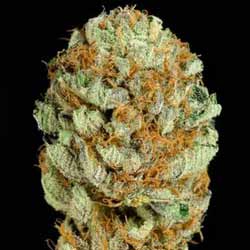
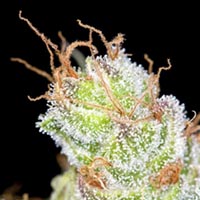
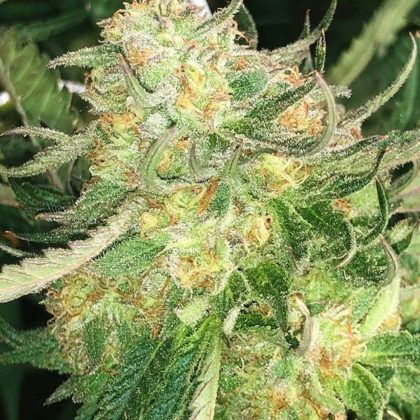
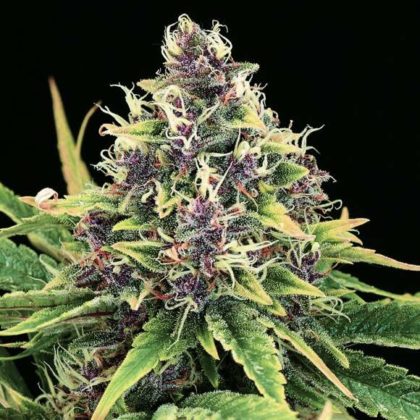



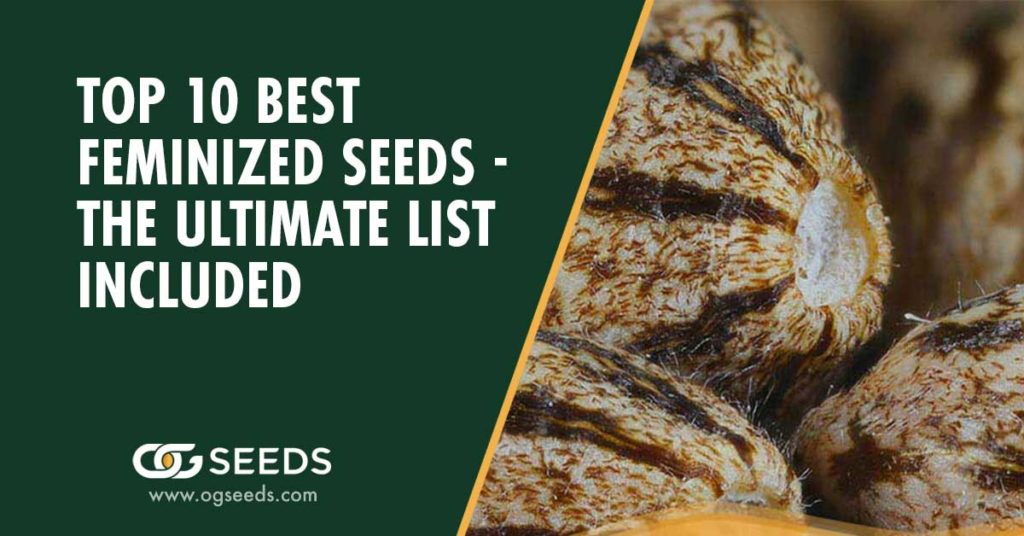
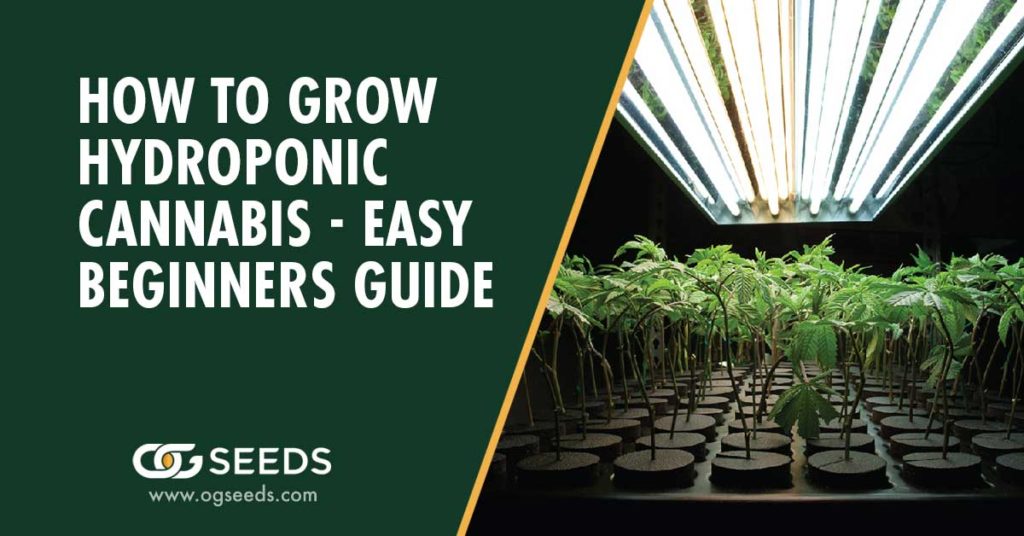
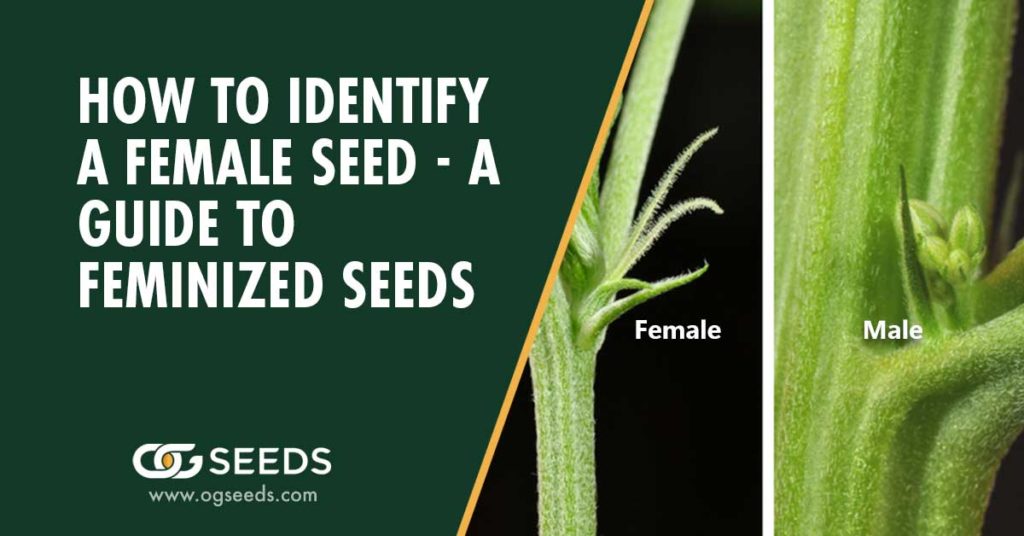
![How Long Does It Take To Grow Cannabis? [Indoors Vs Outdoors]](https://ogseeds.com/wp-content/uploads/2023/01/How_Long_Does_It_Take_To_Grow_Weed_Indoors_Vs_Outdoors_1200x628-1024x536.jpg)
